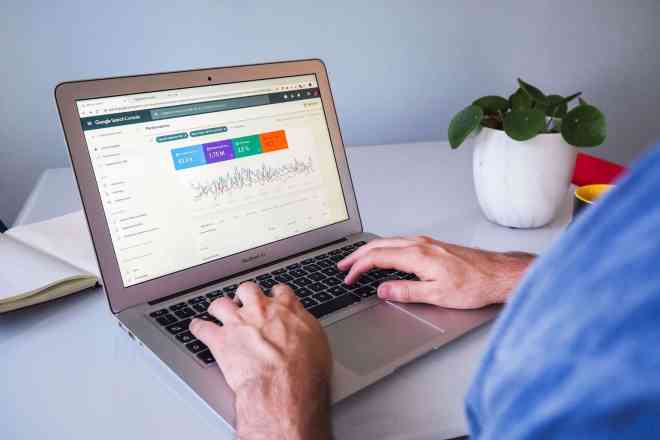A Google Analytics demo account is a widely popular tool for business owners, marketers, and entrepreneurs. If they understand its tools and correctly interpret its data, they can apply their knowledge to their actual Analytics account to extract valuable real-world insights.
What Is a Google Analytics Demo Account?
A Google Analytics demo account is a public Google Analytics account anyone can access. It provides real data from multiple sources so users can practice their analytics knowledge or experiment with general data sets without making changes to their primary accounts.
It takes traffic source, transaction, events, content, and e-commerce data from the Google Merchandise Store and the “Flood-It!” app. For instance, it collects information on user behavior and in-app purchases. While the metrics it tracks may not be relevant to every business, they’re still practical for experimentation and learning.
While a Google Analytics account is free and tracks relevant information, people still use the demo account — why is that? Generally, people want to be able to practice their newly acquired analytics knowledge or test something out without altering their business account.
How Do You Sign up for an Account?
To sign up for a Google Analytics Demo Account, head to the official support page and click one of the three links it provides. Once users sign in to Google — or create a new account — it automatically attaches to their profile. From there, they can access and experiment with it.
The three links lead to separate data models with different properties. Google Analytics uses app or web data from “Flood-It!” and the official merchandise store. Universal Analytics used to display information, but it is no longer usable after Google sunset it in July 2023.
With the leftover data model, users can choose to track web and app data together or just web data. We recommend using both to get more practice, but the choice isn’t that significant. If they start with one and decide they want to use the other, they can use the account selector to change their pick at any time.
Users should know that a demo account counts against the total number of Analytics accounts they’re allowed to have under their profile. This restriction isn’t a huge issue for independent parties or small business owners, but it might matter to larger companies.
If they want to permanently delete their account, they can do so by heading to the Admin page on their Google Analytics account. From there, they select their demo account from the account menu and choose “user management” to find the option to remove it.
What Does a Google Analytics Demo Account Have?
The Google Analytics demo account has most of the features of a regular Analytics account. Users can see user demographics, engagement, retention, audiences, monetization, and events. For example, they can view “add_to_cart” or “first_visit” metrics in the web data or “level_complete” and “in_app_purchase” versions with the app data.
The hub provides a centralized data set, while each category offers a more in-depth view. All of the figures are real and update in real time with each interaction consumers have with the merchandise store or FloodIt! app.
How Do You Use a Demo Analytics Account?
A person has to log in to their Analytics account to use their Google Analytics demo account. From there, it’s all about understanding how each tool works.
Here are the four tabs in the web and app data model:
- Reports: The reports category shows a snapshot and lets users view life cycle engagement, retention, acquisition, monetization, and user demographics.
- Explore: The explore tab helps people uncover custom insights with path exploration, free-form, or funnel exploration. It may be the most helpful tool in the demo’s arsenal.
- Advertising: The advertising category shows a snapshot so users can view conversion paths and model comparisons. It’s very practical for marketers and e-commerce businesses.
- Configure: The configure tab lets people analyze events, audiences, custom definitions, and conversions. It also has a space for DebugView, but it isn’t as useful in the demo.
This quick overview of the four primary categories should help business owners and entrepreneurs understand the basics of the demo account. However, they should know that the standalone app data model offers slightly different metrics.
How Do You Interpret the Data?
Users must understand what they’re viewing to properly interpret their demo account. The app data includes Google Play’s key performance indicators, while the web data focuses on standard e-commerce statistics.
There are many ways they can make the demo account’s data actionable. For example, they can conduct a funnel exploration to see when users convert and leave. Alternatively, they could manipulate data with visualization, segment creation, or custom report generation to personalize their experience.
People should be mindful that their Google Analytics account only shows them information — it does not offer up business approaches. Learning how to properly extract insight from data with the demo account is an excellent method to improve their results. Once they have practiced enough, they can move on to analyzing real-world metrics.
Are There Limitations to the Demo Account?
The Google Analytics demo account does have some limitations. Since users don’t have administrative permissions, they can’t customize the content to reflect their needs. Additionally, DebugView is off-limits because Google Tag Manager tools are only for those with administrator permissions.
Without these permissions, users won’t be able to create or edit events, audiences, parameters, or the reports dashboard — they can only access and view what is already there. The demo account just exists to collect and display metrics from two particular data streams, so it isn’t as fully fleshed out as an individual account.
One of the more subjective limitations of the demo account involves the data it operates on. While it’s useful for viewing how raw information translates into performance indicators, it is entirely irrelevant to most businesses. Although this isn’t much of an issue in the experimentation stage, it creates a learning barrier.
Many valuable tools or settings adjustments aren’t available purely because it’s a shared public account — imagine the chaos that would ensue if everyone could make changes on a whim. It’s still useful despite its limitations as long as users keep them in mind when they go to work on their own Google Analytics account.
What Do You Get Out of a Demo Account?
People gain valuable practice when using the Google Analytics demo account. Although they can’t fully utilize every function it has to offer, it still provides an insightful learning opportunity. Since it provides an avenue for low-risk experimentation, business owners and entrepreneurs can freely test their skills without worrying about impacting their metrics.
Although properly utilizing Analytics to improve the customer experience can result in customer loyalty increases and brand image improvements, data collection is a complex process. Many businesses take a while to gather relevant information, so using a demo account in the meantime is worthwhile for them — it gives them a space to test their methods and skills.
Understand the Value of a Demo Account
Although a genuine and demo Analytics account are both free, they’re incredibly valuable. Once people understand how to properly analyze, organize, and interpret data, they can use real-world industry statistics to improve their business and secure greater revenue. The demo account is invaluable for marketers, entrepreneurs, and business owners.


